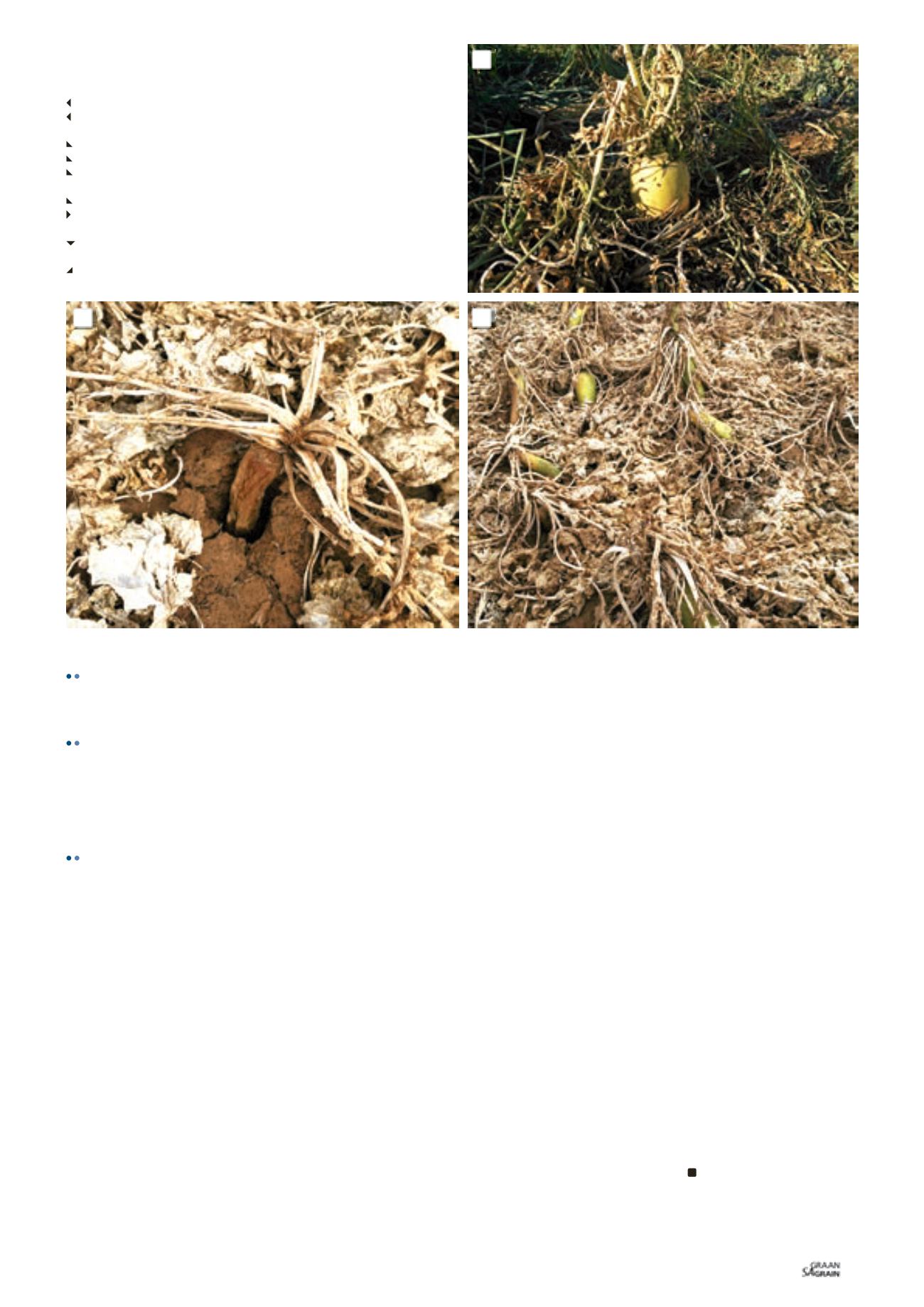

Soil organic matter
Literature states that radish biomass is highly decomposable
and increases in total soil organic matter (SOM) levels following
radish cover crops are unlikely.
Nematodes
According to the institution EXTENSION (America’s Research
Based Learning Network), laboratory bioassays have shown that
the residues of radishes and many other cover crops reduce the
survival of plant parasitic nematodes such as root knot nema-
todes (
Meloidogyne incognita
) and soybean cyst nematodes
(
Heterodera glycines
) compared to unamended controls.
Crop yields
On-farm comparisons and limited replicated trials reported sig-
nificant increases in maize and soybean yields following rad-
ishes as compared to fallow or other cover crops. These yield
increases are likely the combined result of the multiple effects
described above.
Management challenges
Radishes have little tolerance of wet soils; therefore waterlogged
conditions need to be avoided. Radishes are very responsive to N,
and N-deficiency limits their ability to compete with weeds, grow
through compacted soil, and perform other potential functions.
Nitrogen deficiencies have been observed when planting after
silage or grain corn on sandy soils or on soils that do not have a
history of manure application. N deficiencies are also likely when
excessively high populations are established. Radishes are only
moderately cold-hardy and need about six weeks of favourable
growing conditions to produce sufficient biomass to achieve most
potential benefits (
Gruver
et al.
,
2014
)
Animal production aspects
Radish is a good crop for rotational cropping systems, especially
after a few years of pasture just prior to planting a grain crop. This
crop has very valuable benefits for the dairy production industry.
Often radish is grazed with the help of an electric fence, howev-
er, to optimally use most of the plant material, it can be removed
from the soil and fed to cattle. Production values of up to 6 tons/ha
can be expected with a protein value of 18% - 21% for roots and
20% - 30% for leaves. (
Dannhauser, C. and Van Zyl, E. – personal
communication
).
Conclusion
Choosing radish as a cover crop should be closely linked to prob-
lems that producers who are practising conservation agriculture,
encounter. One such a problem, especially in our semi-arid cropping
areas, is compaction layers within the soil profile, especially within
the top 40 cm.
The unique taproot of radish and the ability to elevate this compac-
tion to depth can have an impact on farmer’s decision to use rad-
ish as a cover crop. Not only deep compaction layers are elevated,
but tubers push the soil up at the surface making it soft and posi-
tively influence infiltration.
Due to the fact that residues of radish have a narrow C:N ratio, it
is best used in mixtures with crops such as grazing vetch and
black oats. This will ensure a proper ground cover before a cash
crop is planted. Using radish and radish mixtures during the cool
winter months usually deplete soil water that could influence or de-
lay initial planting dates of a following summer cash crop due to a
dry soil profile.
For more information, contact Dr Wayne Truter at
wayne.truter@
up.ac.za
, Prof Chris Dannhauser at
admin@GrassSA.co.za ,Dr Hendrik Smith at
hendrik.smith@grainsa.co.zaor Mr Gerrie
Trytsman at
gtrytsman@arc.agric.za .References
Gruver, J., Weil, R., White, C. and Lawley, Y. 2014.
Radishes – a new cover crop for
organic farming systems
.
1: Fully grown forage radish.
2: Rex Fey, a producer from Kokstad, who achieves great success with
grazing forage radish.
3: Grazing system for forage radish.
4: Cattle production on irrigated forage radish.
5: Tillage radish used as a cool-season cover crop at Ottosdal, North
West Province.
6: A mixture of tillage radish, black oats and grazing vetch at Ottosdal.
7: Japanese radish as part of a multi-species cover crop field at Bergville,
KwaZulu-Natal.
8: Tillage radish has a positive impact on soil surface compaction
and cover.
9: Tillage radish is killed by frost or herbicide before the start of the next
growing season.
57
June 2015
8
9
7

















